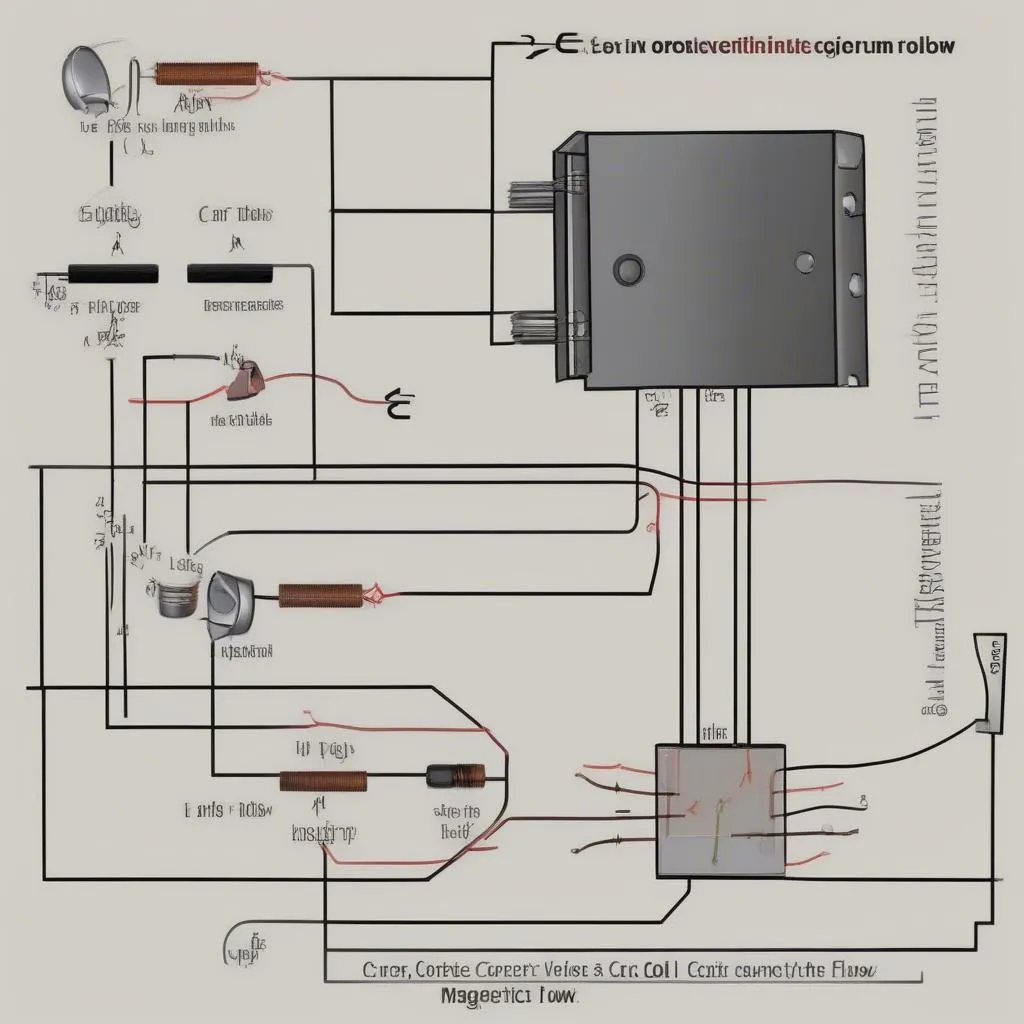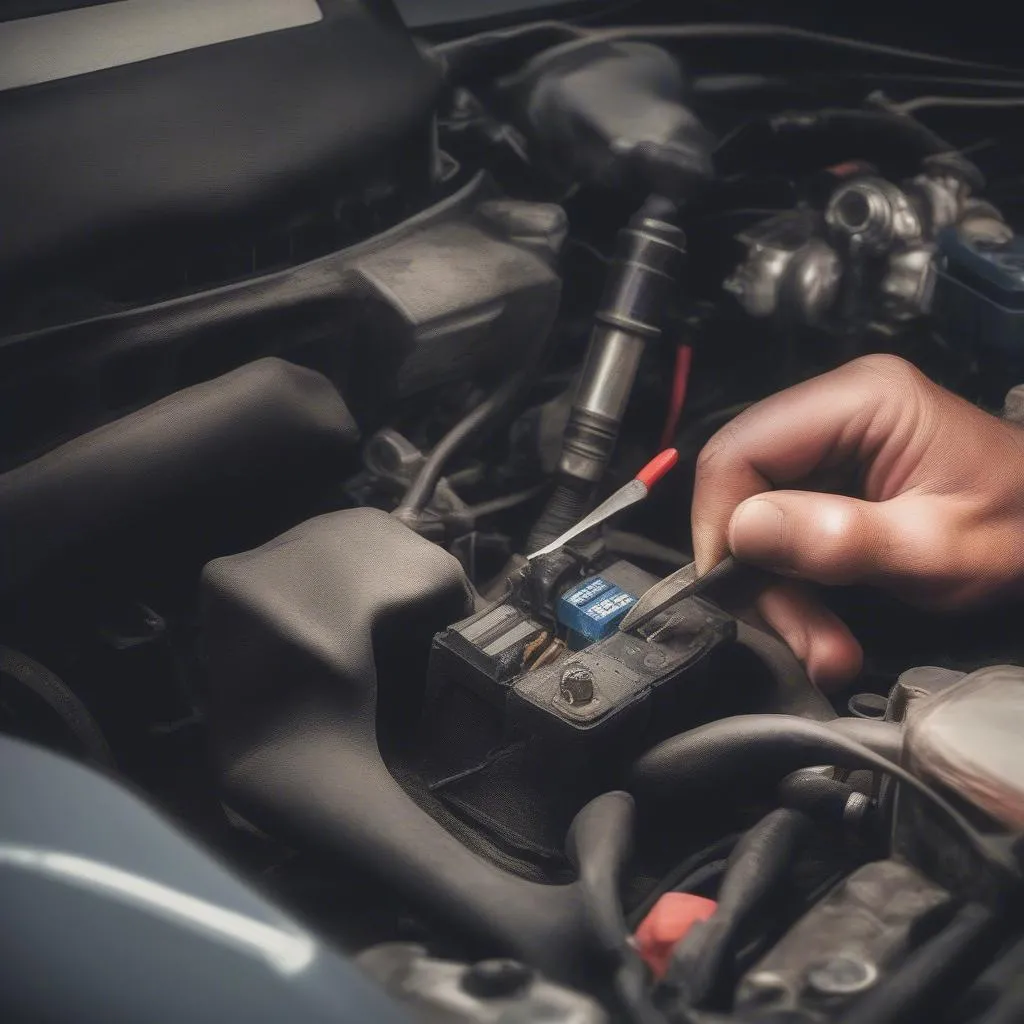Have you ever wondered how your car’s lights turn on with a simple flick of the switch? Or how your windshield wipers activate when you need them? Behind these seemingly simple actions lies a crucial electrical component: the 12-volt car relay.
What is a 12 Volt Car Relay and Why is it Important?
A 12-volt car relay is an electromechanical switch that uses a small electrical current to control a larger electrical circuit. It’s essentially a gatekeeper for electricity, allowing it to flow only when activated. Think of it like a remote control for your car’s lights, wipers, or other electrical components.
Understanding the Role of Relays in Your Car
Imagine driving down a highway at night. Suddenly, you need to turn on your headlights. A 12-volt car relay comes into play. When you flick the switch, a small electrical current travels through the relay’s coil, creating a magnetic field. This magnetic field attracts a metal arm, closing the circuit and allowing the larger current needed for your headlights to flow. Without the relay, you’d need a much larger switch capable of handling the high current directly, which is impractical and potentially dangerous.
Why You Should Care About 12 Volt Car Relays
Relays are critical for the smooth operation of many functions in your car, including:
- Headlights: Relaying power to the headlights prevents overheating and potential damage to the wiring.
- Windshield wipers: Relays enable the efficient and safe operation of your windshield wipers, ensuring clear visibility during inclement weather.
- Engine cooling fan: The cooling fan motor requires a large amount of current, and a relay helps control the flow of electricity safely.
- Fuel pump: Relays protect the fuel pump circuit and ensure a consistent fuel supply to your engine.
- Power windows and door locks: Relays allow for easy and safe control of these features.
 Automotive Electrical Relay Circuit
Automotive Electrical Relay Circuit
Troubleshooting 12 Volt Car Relays
What are the signs that your 12-volt relay is malfunctioning?
- Non-functioning electrical components: If a component like your headlights, wipers, or cooling fan isn’t working, a faulty relay could be the culprit.
- Clicking noises: You may hear a clicking sound coming from the relay when you attempt to operate a certain function. This indicates that the relay is attempting to engage but is not working properly.
- Overheating: A malfunctioning relay can overheat and cause damage to surrounding components.
How to Replace a 12 Volt Car Relay
 Automotive Relay Replacement
Automotive Relay Replacement
Replacing a car relay is a relatively straightforward process, but it’s essential to have the correct relay and to follow safety precautions.
Here are the general steps:
- Identify the relay: Consult your car’s owner’s manual or an online resource to locate the relay specific to the component that’s malfunctioning.
- Disconnect the battery: Always disconnect the battery to prevent electrical shock before working on any electrical components.
- Remove the old relay: Carefully remove the old relay from its socket. It usually snaps into place.
- Install the new relay: Install the new relay into the socket, ensuring it’s properly seated.
- Reconnect the battery: Reconnect the battery and test the affected component.
Common 12 Volt Car Relay Issues
1. Relay Contacts: The Heart of the Relay
The relay contacts are the metal points that make or break the electrical circuit. Over time, they can become corroded or worn down, preventing proper connection.
Tip: Cleaning the contacts with a contact cleaner can sometimes restore their functionality.
2. Relay Coil: The Power Source
The relay coil is an electromagnet that activates the relay. If the coil fails, the relay won’t be able to activate properly.
Tip: A faulty coil usually needs replacement.
3. Relay Socket: The Connection Point
The relay socket is where the relay sits and connects to the electrical circuit. If the socket is damaged, it can prevent a proper connection.
Tip: Inspect the socket for any signs of damage and replace it if necessary.
Where to Find 12 Volt Car Relays
Finding the Right Relay
-
OEM Relays: These are relays manufactured by the original equipment manufacturer (OEM) for your specific vehicle. They are typically the best choice for reliability.
-
Aftermarket Relays: These are relays manufactured by third-party companies. They can be more affordable, but you need to ensure they meet your car’s specifications.
-
Online Retailers: Websites like Amazon, eBay, and specialized automotive parts retailers offer a wide selection of relays.
-
Local Auto Parts Stores: Local auto parts stores can help you find the right relay based on your car’s make, model, and year.
Tips for Maintaining Relays
- Regular Inspections: Check relays for signs of wear and tear during routine car maintenance.
- Clean Contacts: Clean relay contacts with a contact cleaner to prevent corrosion.
- Replace Worn Relays: Replace relays that show signs of damage or malfunction to prevent potential electrical issues.
FAQs about 12 Volt Car Relays
Q: How can I test a 12-volt car relay?
A: Testing a relay involves using a multimeter to check the continuity of the contacts and the resistance of the coil.
Q: Can I replace a relay myself?
A: Replacing a relay is typically a straightforward procedure. However, if you’re unsure, consult a professional mechanic for assistance.
Q: What are some common relay issues for specific car models?
A: Relay issues can vary depending on the make and model of your car. For example, Ford F-150 trucks are known for having issues with the fuel pump relay, while Honda Civics are known for having issues with the headlight relay.
Q: Are there different types of relays?
A: Yes, there are various types of relays, including:
- SPDT (Single-Pole Double-Throw): Used for switching between two circuits.
- DPDT (Double-Pole Double-Throw): Used for switching two circuits simultaneously.
- SPST (Single-Pole Single-Throw): Used for simply opening or closing a circuit.
Q: How can I find the relay for my car’s specific function?
A: The location and type of relay vary depending on the car model. You can consult your car’s owner’s manual, a repair manual, or an online resource to find the specific relay you need.
Need More Help?
Don’t hesitate to reach out to our team at Tech Car USA if you have any questions or need assistance with diagnosing or replacing a relay in your car. We’re here to help! Contact us via WhatsApp at +84767531508, and our team of automotive specialists will be happy to provide support and guidance.
Conclusion
12-volt car relays play a vital role in the smooth operation of your car’s electrical systems. Understanding how they work and how to troubleshoot them can save you time, money, and potential headaches. Remember, regular maintenance and timely replacement can ensure your relays continue to perform optimally and keep your car running smoothly.
Please feel free to leave a comment below with any questions you have about relays or other car-related topics. We encourage you to share your experiences and knowledge with other readers!